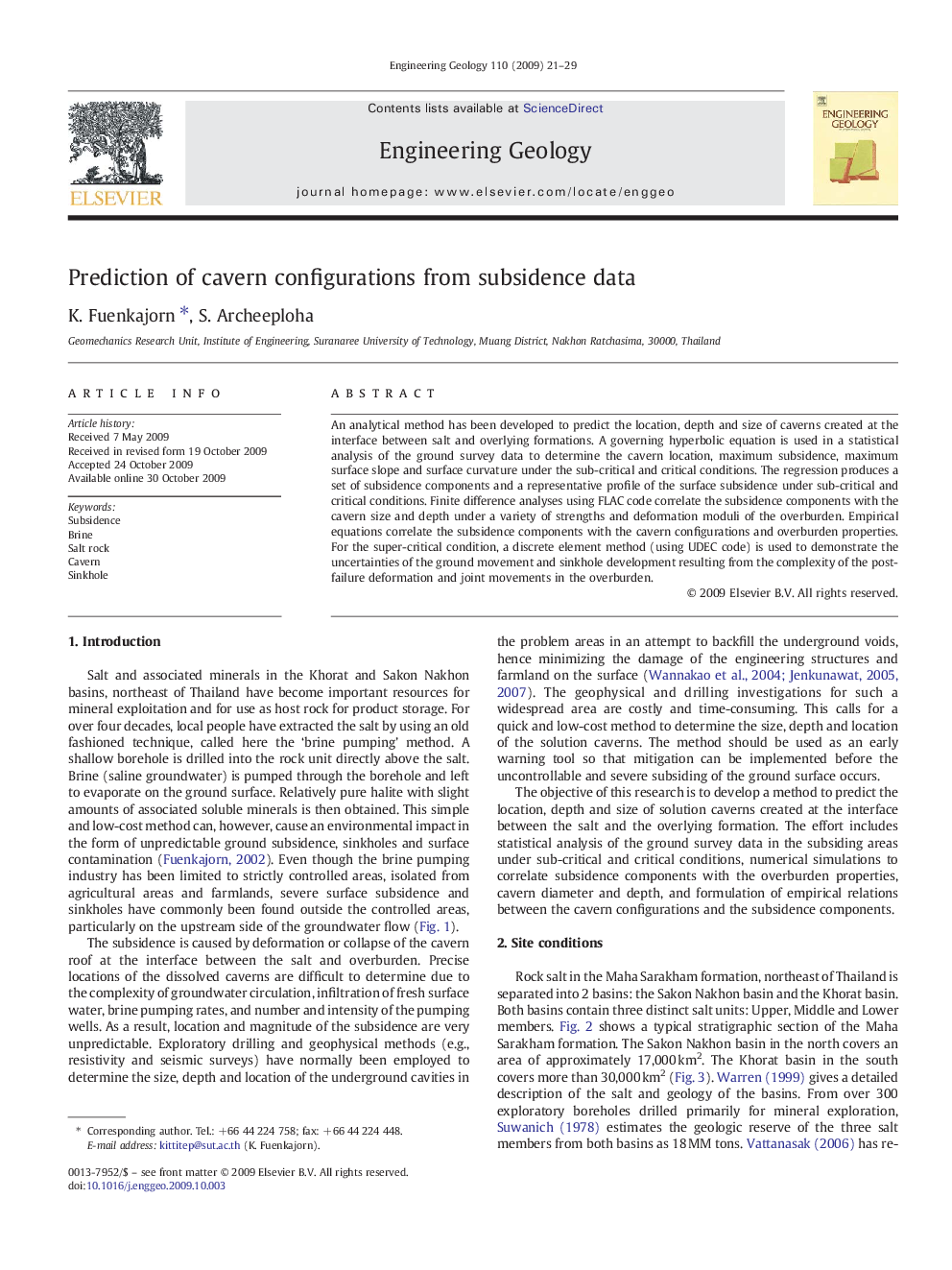| Article ID | Journal | Published Year | Pages | File Type |
|---|---|---|---|---|
| 4744394 | Engineering Geology | 2010 | 9 Pages |
An analytical method has been developed to predict the location, depth and size of caverns created at the interface between salt and overlying formations. A governing hyperbolic equation is used in a statistical analysis of the ground survey data to determine the cavern location, maximum subsidence, maximum surface slope and surface curvature under the sub-critical and critical conditions. The regression produces a set of subsidence components and a representative profile of the surface subsidence under sub-critical and critical conditions. Finite difference analyses using FLAC code correlate the subsidence components with the cavern size and depth under a variety of strengths and deformation moduli of the overburden. Empirical equations correlate the subsidence components with the cavern configurations and overburden properties. For the super-critical condition, a discrete element method (using UDEC code) is used to demonstrate the uncertainties of the ground movement and sinkhole development resulting from the complexity of the post-failure deformation and joint movements in the overburden.
